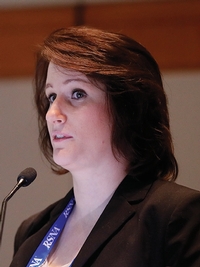Distinguishing liver abnormalities like hemangioma from more serious conditions like hepatocellular carcinoma (HCC) is vitally important for treatment decisions. However, smaller liver lesions can be difficult to classify on imaging. A better imaging method would help patients with benign liver growths avoid unnecessary and expensive procedures.
German researchers recently evaluated an experimental technique that relies on simultaneous administration of two separate contrast agents: iodine for the arterial phase and gadolinium for the venous phase. After contrast injection, spectral photon counting CT (SPCCT) is used to simultaneously assess the gadolinium and iodine enhancement in the liver in different contrast phases.
"This multi-phase visualization of the liver at one time point by a single CT scan exhibits perfect co-registration of the images in different phases, allowing for more accurate and quantitative subsequent voxel-by-voxel post processing and a significant reduction in radiation dose," said Daniela Muenzel, MD, from the Laboratory for Advanced Computed Tomography Imaging at the Technical University of Munich.
Dr. Muenzel and colleagues created a simulation model to test dual contrast-enhanced liver imaging. SPCCT was simulated with the two different contrast agents and material decomposition provided iodine and gadolinium maps calculated from the spectral information. Researchers inserted characteristic liver lesions like hemangioma, HCC, cysts and metastases into the simulation.
Results demonstrated that the combination of SPCCT and an optimized contrast injection protocol made it feasible to provide contrast-enhanced images with arterial distribution of gadolinium and portal-venous phase of iodine in a single CT scan with reduced radiation dose. The four inserted liver lesions were clearly visible and the characteristic patterns of contrast enhancement were seen in arterial and portal-venous images.
"By using two contrast agents and different uptake characteristics in liver lesions, we can classify cysts, hemangiomas, HCC and metastases in a single CT scan," Dr. Muenzel said.
In addition to potential dose reduction, the technique also eliminates misregistration artifacts between acquisitions, Dr. Muenzel said.
The technique will need additional testing before it is ready to be used in humans. Eventually, the researchers hope to conduct liver imaging studies in patients and look for other clinical indications that can be addressed by SPCCT with two contrast agents applied simultaneously.
